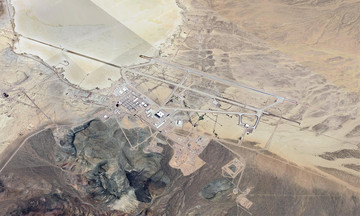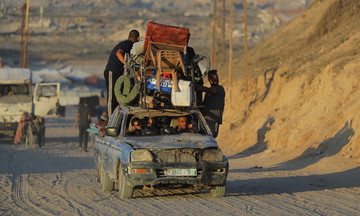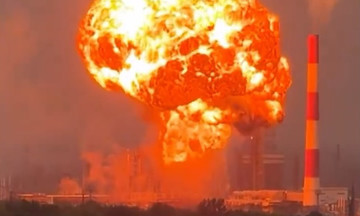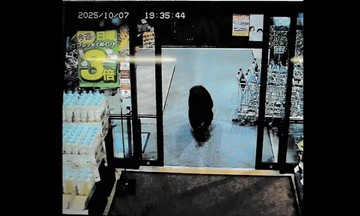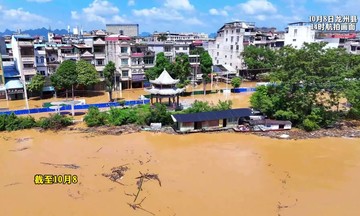After sweeping across Taiwan, super typhoon Ragasa moved westward towards mainland China on 24/9. Despite being offshore, approximately 100 km south of Hong Kong, Ragasa was still predicted to significantly impact the special administrative region.
The Hong Kong government issued a signal 9 typhoon warning and quickly raised it to the highest level, signal 10. Ragasa, with winds reaching 195 km/h, was one of the strongest storms the city had ever faced, surpassing the 175 km/h winds of super typhoon Mangkhut, which impacted Hong Kong in 2018.
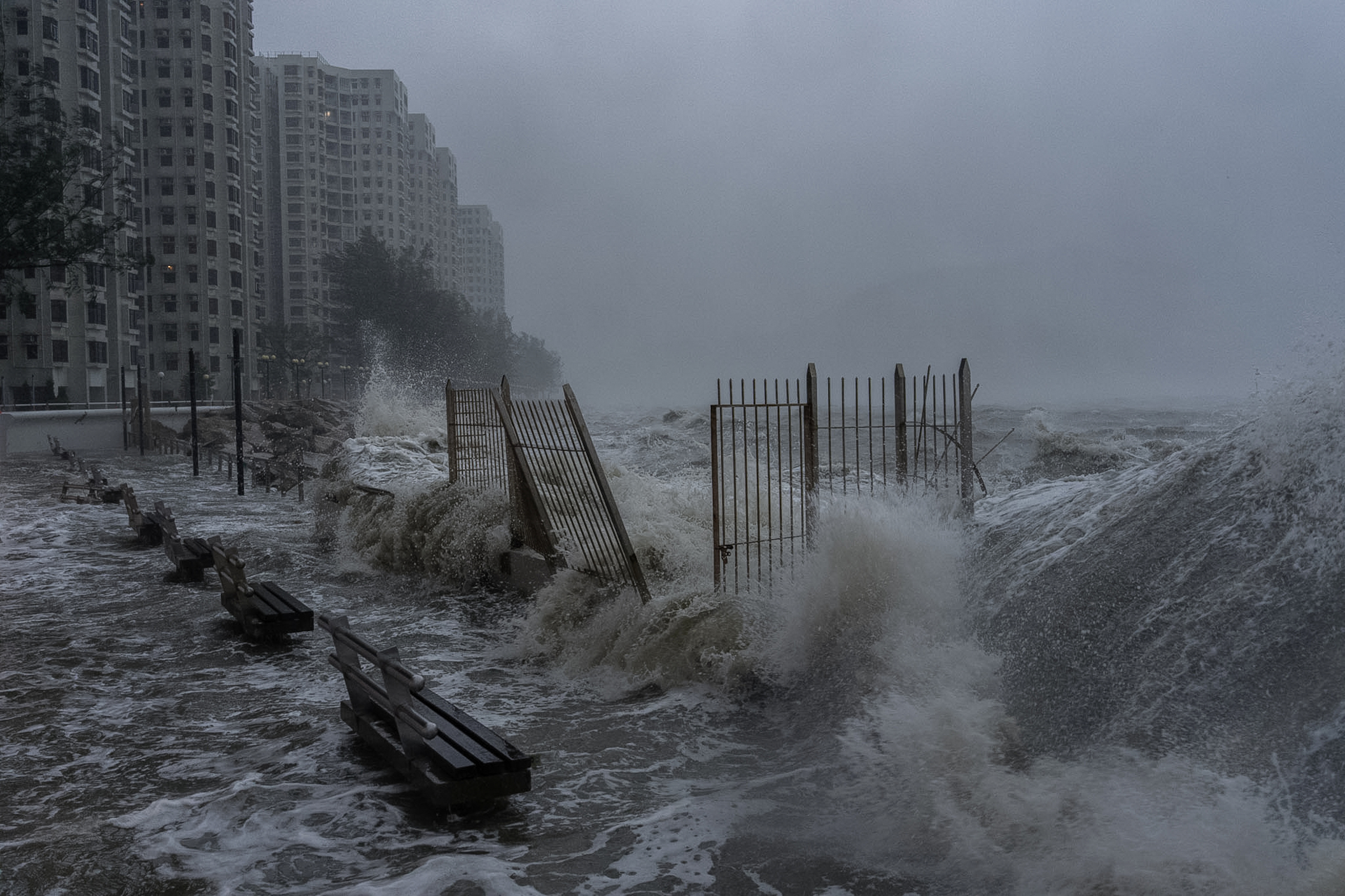 |
Large waves crash into a coastal area in Hong Kong as typhoon Ragasa approaches on 24/9. Photo: *AP* |
Mangkhut, with a similar trajectory to Ragasa, shattered windows in hundreds of apartments and shops, damaged approximately 700 vehicles, and caused widespread damage to roads and buildings, leaving more than 40,000 households without power and toppling 60,000 trees. The storm injured 458 people, one of the highest casualty counts Hong Kong had recorded since 1960.
Concerned about history repeating itself, the Hong Kong Observatory began issuing warnings about Ragasa soon after the storm formed from a tropical depression in the Western Pacific Ocean on 19/9.
The government raised the alert level when Ragasa intensified into a super typhoon on 22/9, with winds exceeding 260 km/h before weakening somewhat, but still predicted to cause significant damage.
"Hong Kong residents were complacent and didn't take the government's warnings about Mangkhut seriously," said Professor Johnny Chan of the Asia-Pacific Typhoon Research Center. "This time, the Hong Kong Observatory has reinforced memories of Mangkhut, emphasizing that Ragasa would be very similar."
The measures proved effective. On 22/9, evening rush hour traffic in Hong Kong decreased considerably. Hong Kong workers, who often work late, chose to leave work on time to prepare themselves, their families, and their homes. They flocked to supermarkets to stock up on supplies, forming long checkout lines.
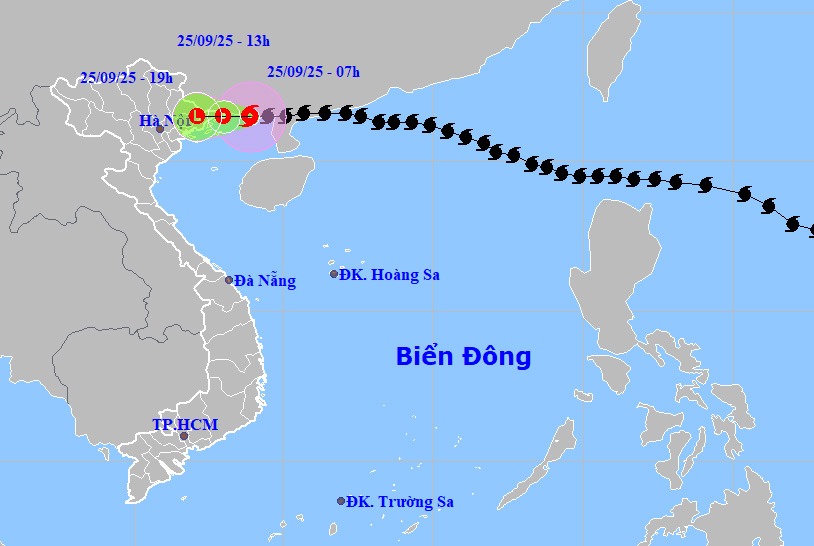 |
Projected path and area of influence of typhoon Ragasa at 7 a.m. on 25/9. Photo: *NCHMF* |
In the days leading up to the storm's approach, both residents and officials took swift action. Shopkeepers taped windows, secured furniture, and other items that couldn't be brought inside. The Hong Kong government dispatched teams to clear debris from drains, reinforce vulnerable slopes, install flood barriers, and erect sandbag walls in low-lying areas.
Schools were closed, and most offices allowed employees to leave early on 23/9 so they could get home. Hospitals suspended non-emergency services, and public transportation was limited. Hong Kong Airport canceled all flights for 36 hours, and 80% of local airlines' aircraft were evacuated.
According to Professor Chan, Hong Kong officials wanted to avoid the chaos that occurred when super typhoon Saola hit the region in 2023. Hundreds of people arriving in Hong Kong were stranded at the airport due to the suspension of public transport.
Professor Chan noted that after Mangkhut, the Hong Kong government had improved the drainage system and removed vulnerable trees over the years. "That's why the number of fallen trees has decreased significantly this time," he said. "And it would be even better if the government deployed rapid response teams to handle the situation and avoid traffic disruptions like in 2018."
Hong Kong officials recorded 1,200 cases of fallen trees, 4 landslides, and 22 flooded areas by the evening of 24/9. A level 3 typhoon warning remained in effect until the morning of 25/9. Financial losses were also minimized because workers could work remotely.
Hong Kong's coastal areas still suffered some damage from Ragasa. Social media videos showed the Fullerton Ocean Park Hotel's reinforced glass windows shattered by waves, with water flooding the lobby and carrying debris. This hotel opened in 2022 and had withstood super typhoon Saola.
The number of people injured by Ragasa in Hong Kong as of the evening of 24/9 was 101, with no fatalities reported. Hong Kong officials were better prepared, and residents followed government recommendations, which helped minimize the damage from the storm, observers said.
"The local government did a very good job of providing early warnings so people had time to prepare. People also learned from the lessons of 2018," Professor Chan said.
However, experts believe Hong Kong still has some lessons to learn from this event to prepare for future storms.
Professor Yau Yung of Lingnan University, Hong Kong, suggested that existing buildings could be fitted with temporary metal shields to prevent water ingress, while future constructions should incorporate flood-resistant designs and avoid building close to the coast, to mitigate the risk of wave damage like that suffered by the Fullerton Ocean Park Hotel.
Professor Benjamin Horton, Dean of Energy and Environment at City University of Hong Kong, said that super typhoons will become more frequent and intense in the coming period, potentially causing severe damage if high tides coincide with storm surges.
Professor Horton called on the Hong Kong government to adopt nature-based solutions for adaptation, such as planting mangrove forests and developing oyster reefs along the coast to act as natural barriers.
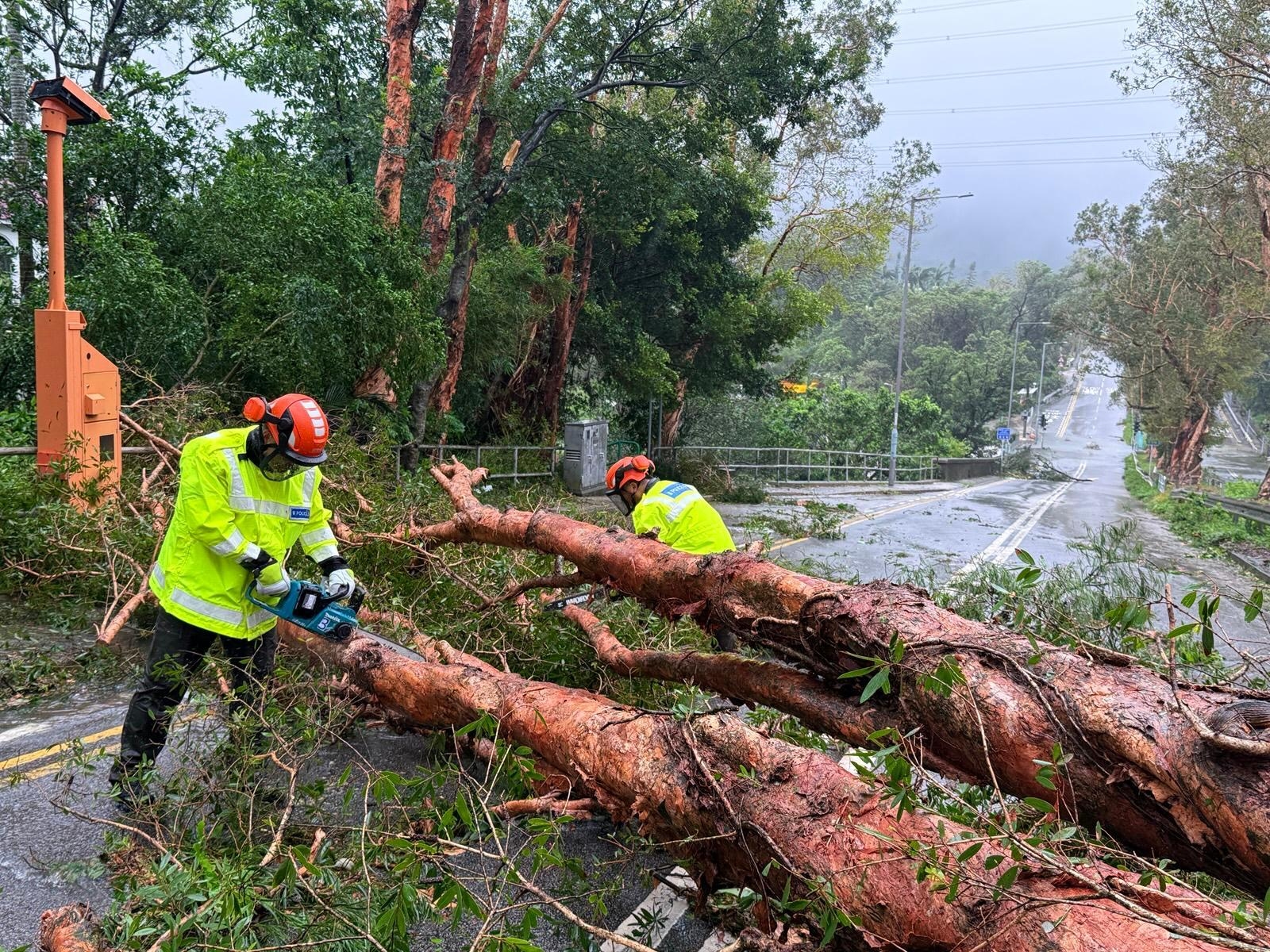 |
Hong Kong police clear fallen trees caused by typhoon Ragasa on 24/9. Photo: *AFP* |
In Taiwan, which was also in the path of super typhoon Ragasa, the island's authorities issued warnings, evacuated people in dangerous areas, and suspended public transportation.
However, Taiwan still suffered heavy casualties as heavy rain caused a reservoir to burst upstream of the Ma Tai An River in Hualien County, eastern Taiwan. Floodwaters carrying rocks and debris rushed downstream, sweeping away a bridge over the river and submerging many houses, leaving 17 people dead and 17 missing.
According to *Focus Taiwan*, this reservoir formed in July, after typhoon Wipha caused a major landslide in the forest upstream of the Ma Tai An River. After running simulation models, the Forestry and Nature Conservation Agency initially assessed the reservoir as stable.
Taiwanese officials considered options for reinforcement and draining water from the reservoir before the super typhoon approached, but these were not feasible due to the difficult terrain. Therefore, they focused on enhanced monitoring and mitigating the risk of disaster downstream through evacuation plans.
Taiwan's Emergency Operation Center met on 21/9, assessing that approximately 1,800 households in Hualien needed to be evacuated, and provided relevant data to local officials.
Response measures were implemented on 23/9, but the reality showed that they were insufficient. The Hualien government faced criticism for not making the evacuation order mandatory, while the recommendation for "vertical evacuation," meaning moving to higher floors, led many people to believe their homes were safe and ultimately went missing in the floodwaters.
Nhu Tam (*Strait Times*, *Reuters*, *Focus Taiwan*)





